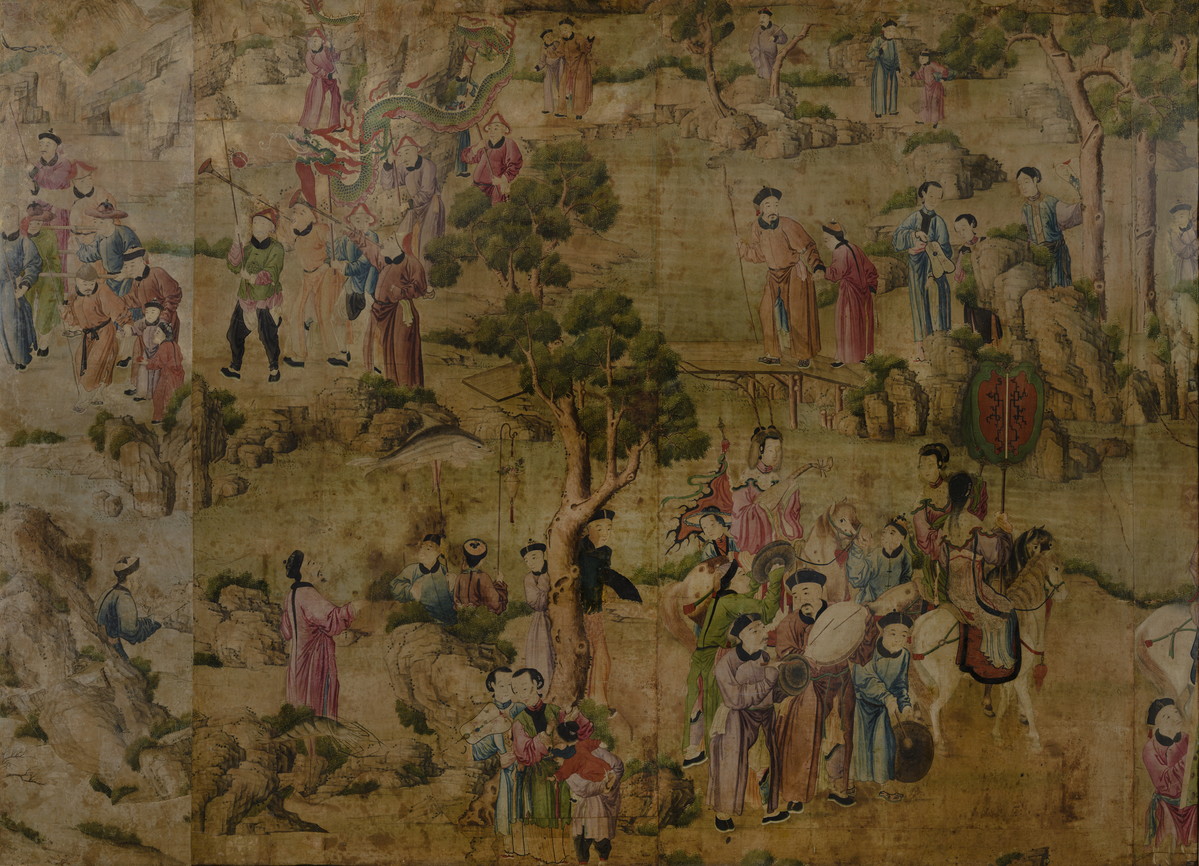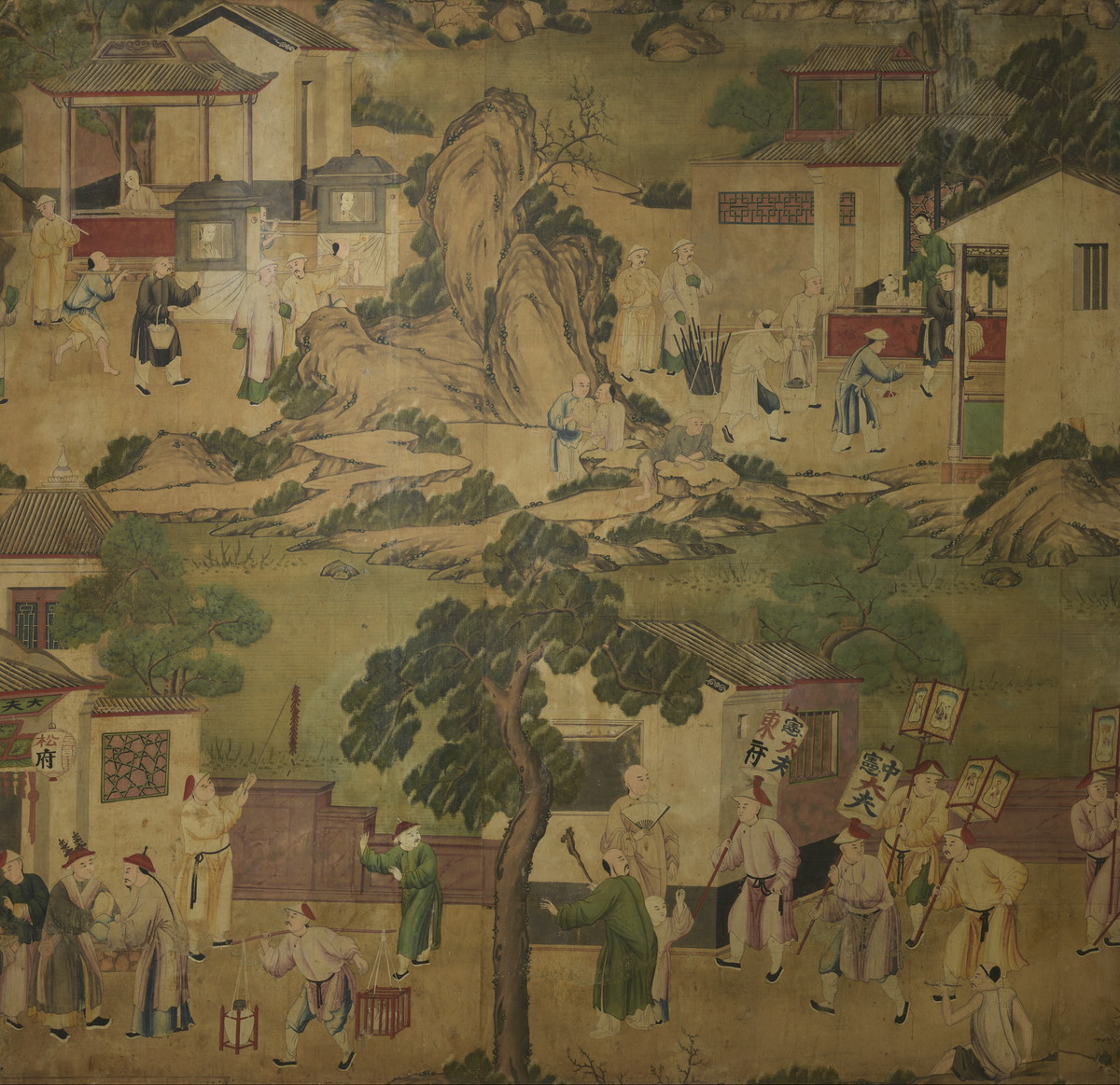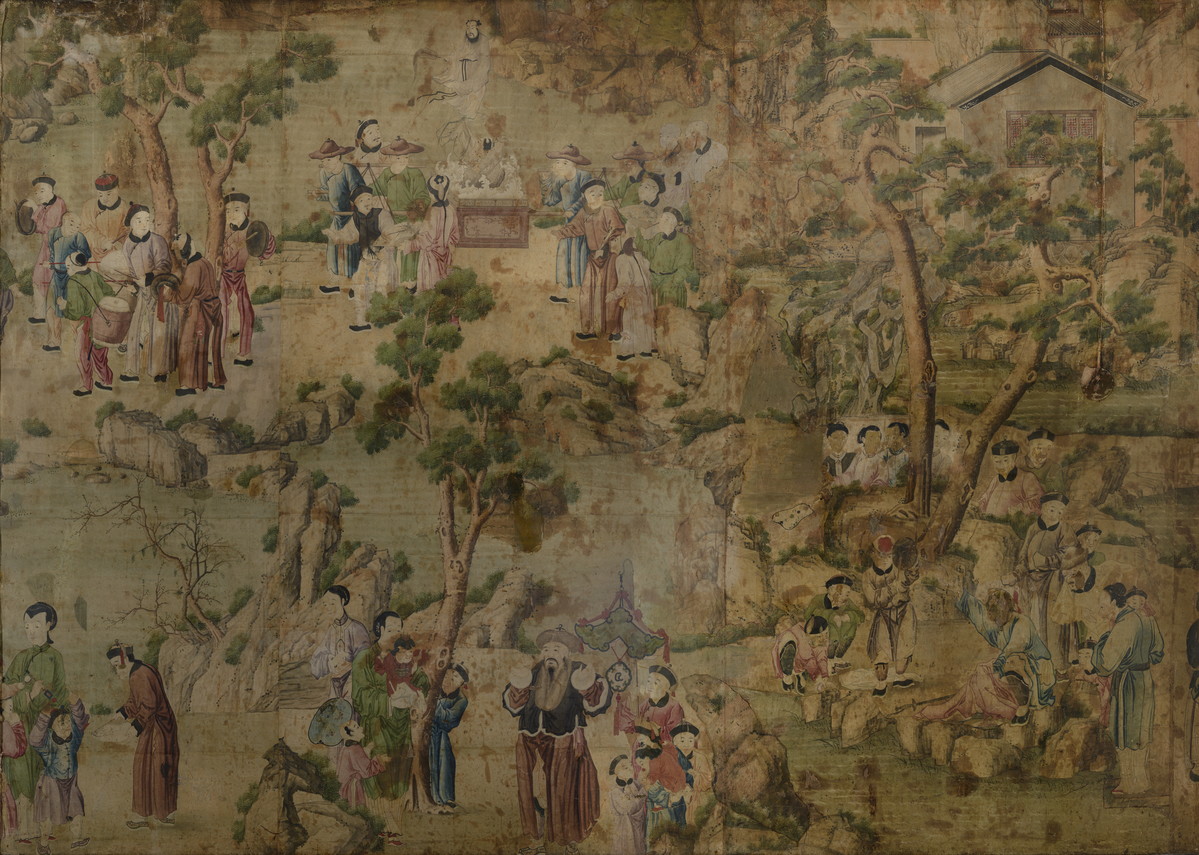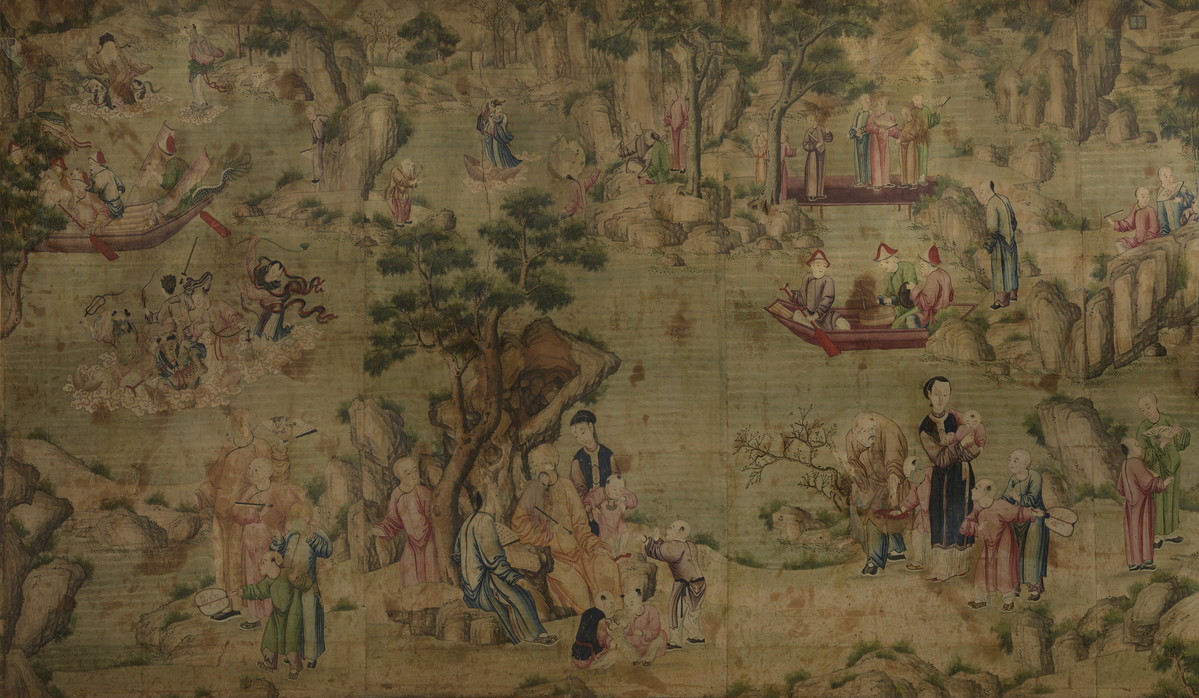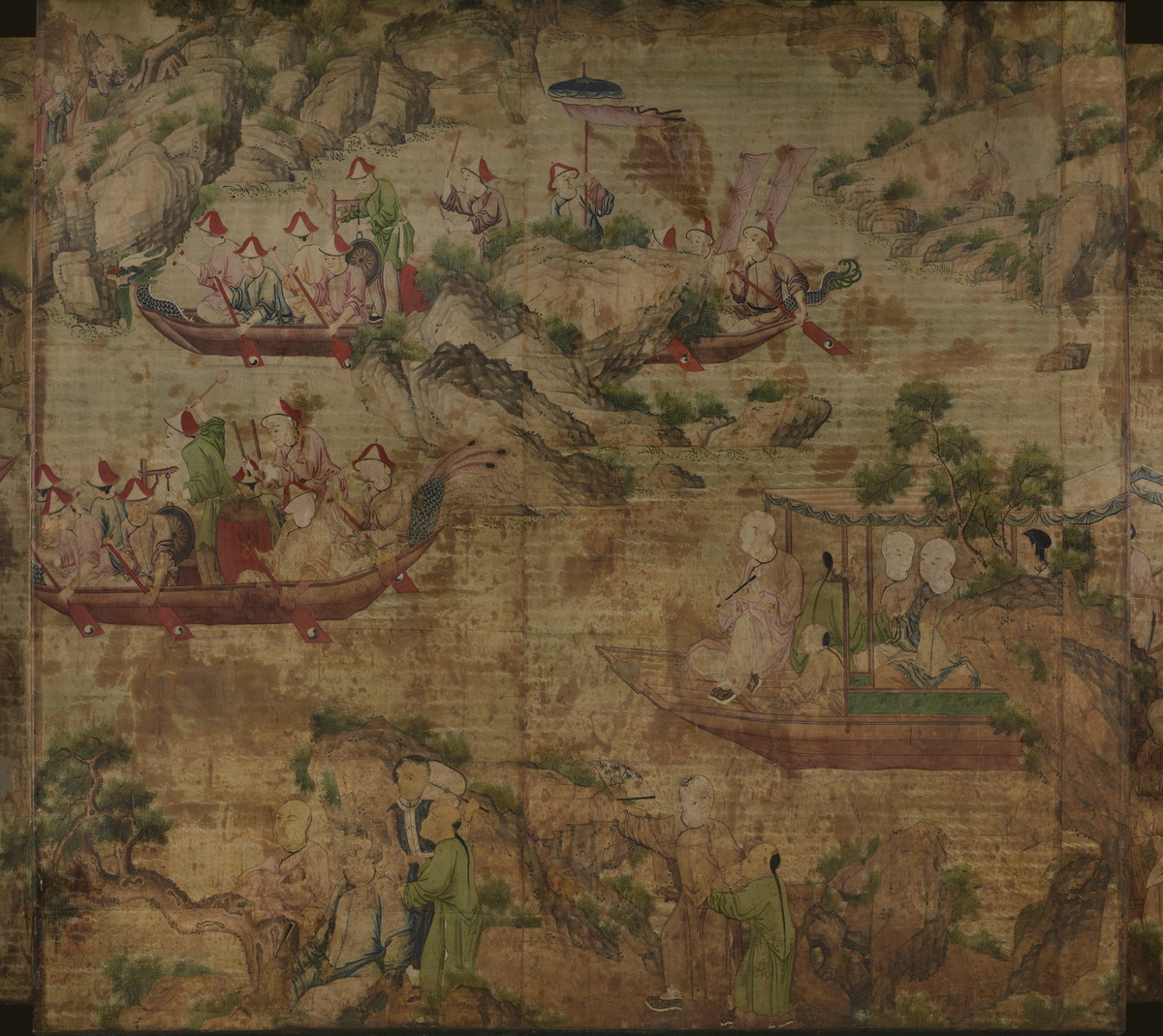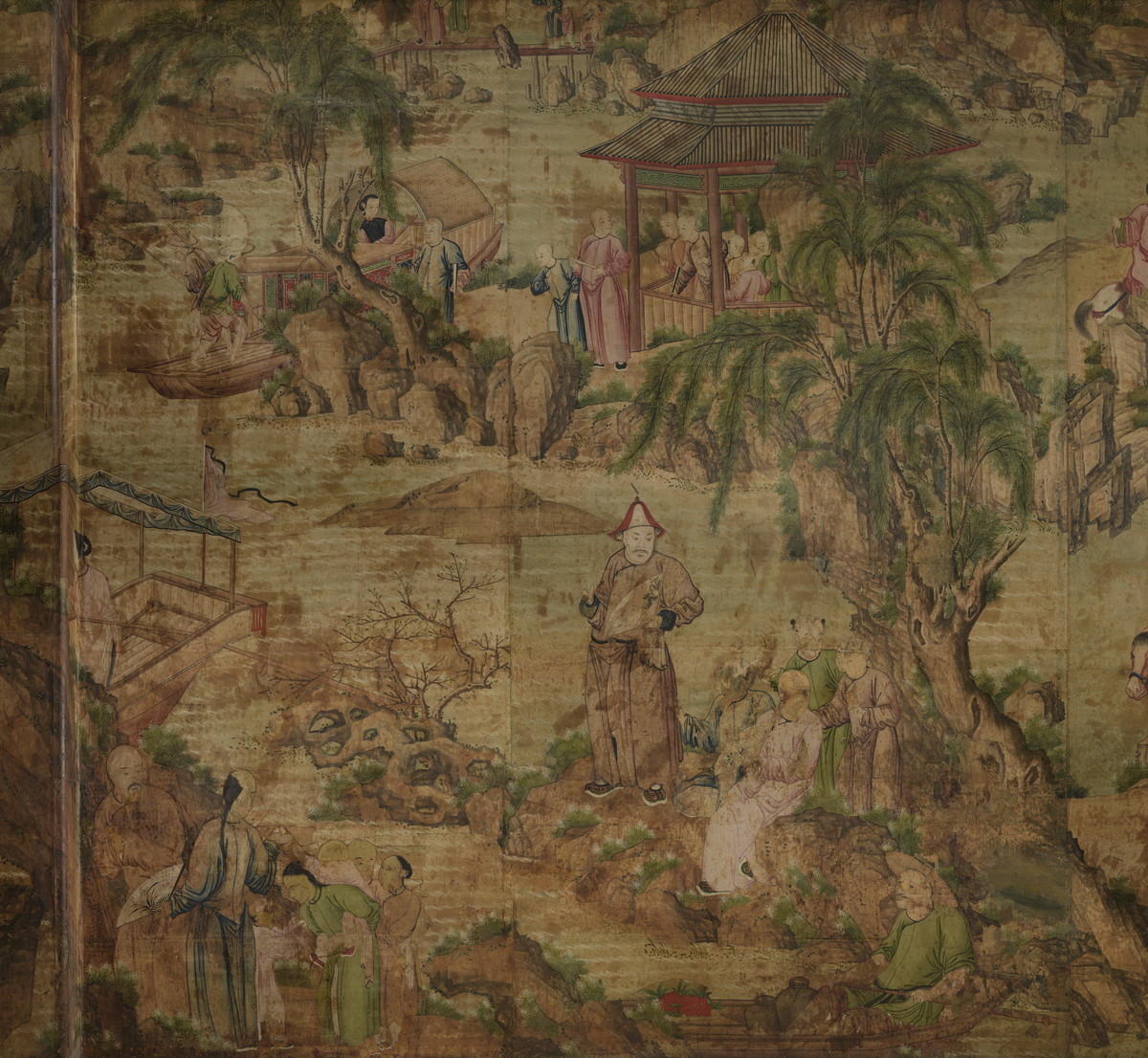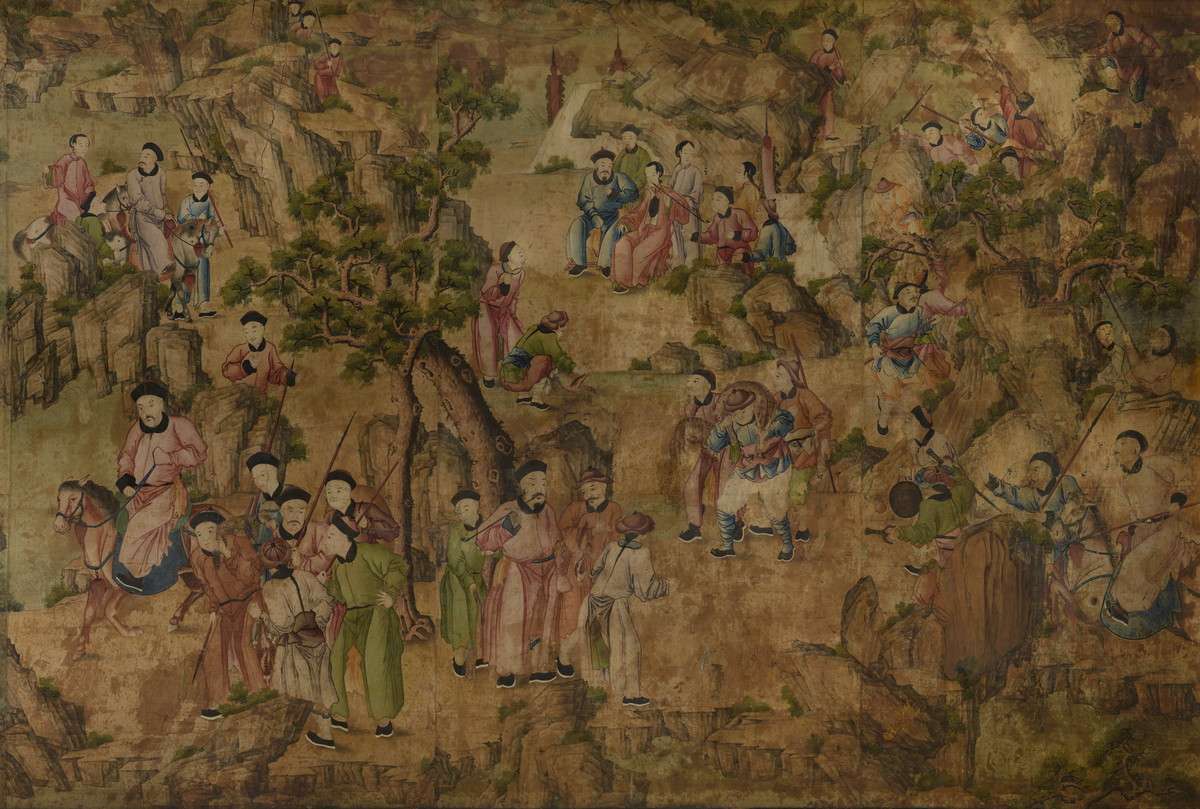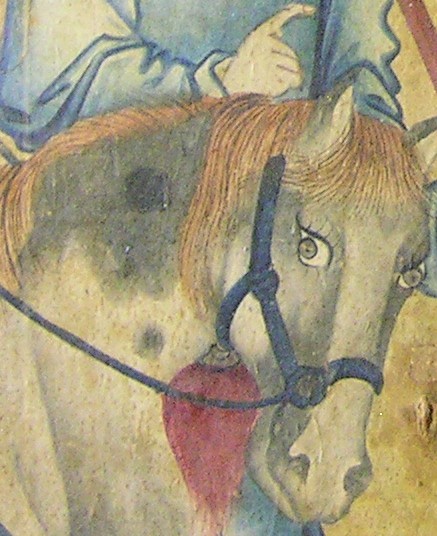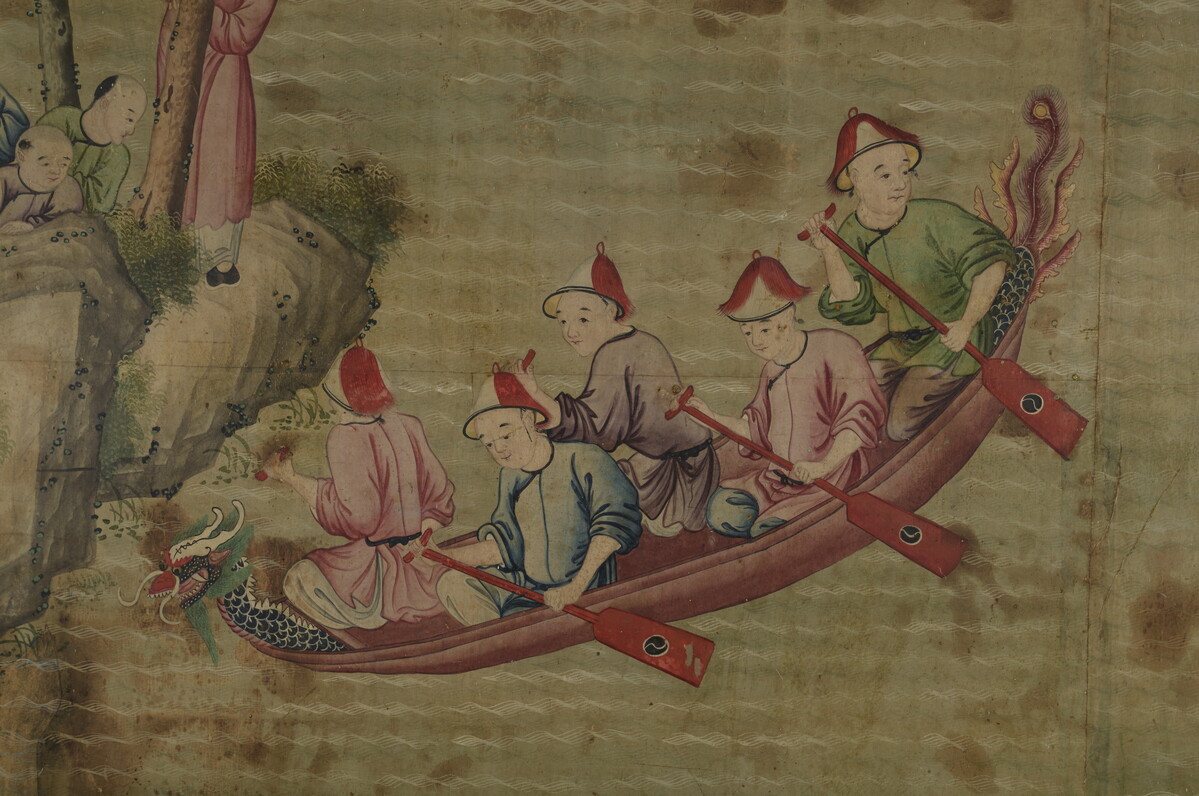Adelaide Corridor Wallpaper
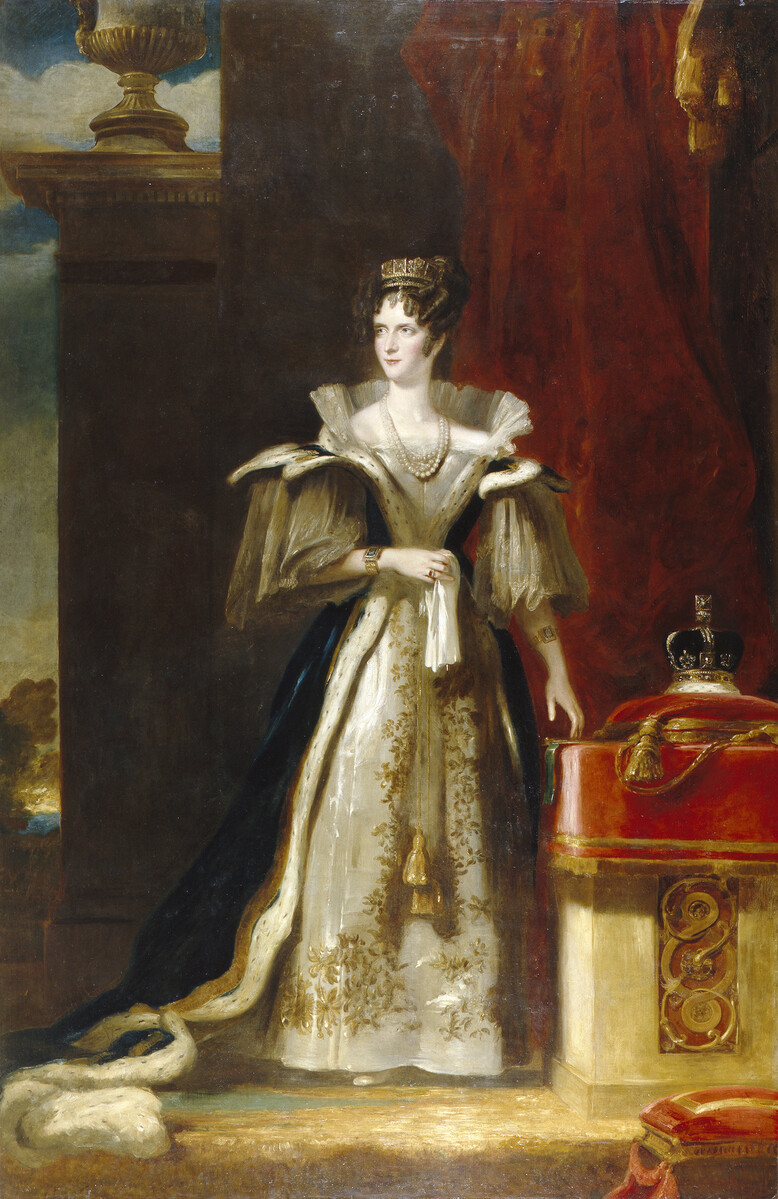
How did Chinese wallpaper find its way to the Royal Pavilion? Our paper conservator looks at the history that hangs on our walls.
The fantastic 18th Century hand-painted wallpaper in the Adelaide Corridor was produced in China for export to Europe. It is remarkable for its longevity as much as its spectacular scenes, and for having survived in its original location since being hung there 200 years ago – one of very few items in the Royal Pavilion which have remained undisturbed in this way.
We refer to this wallpaper as the Adelaide Corridor paper as the passageway where it is located links the Queen Adelaide tearooms. The tearooms take their name from the suite used by Adelaide when she became queen on William IV’s accession to the throne in 1830.
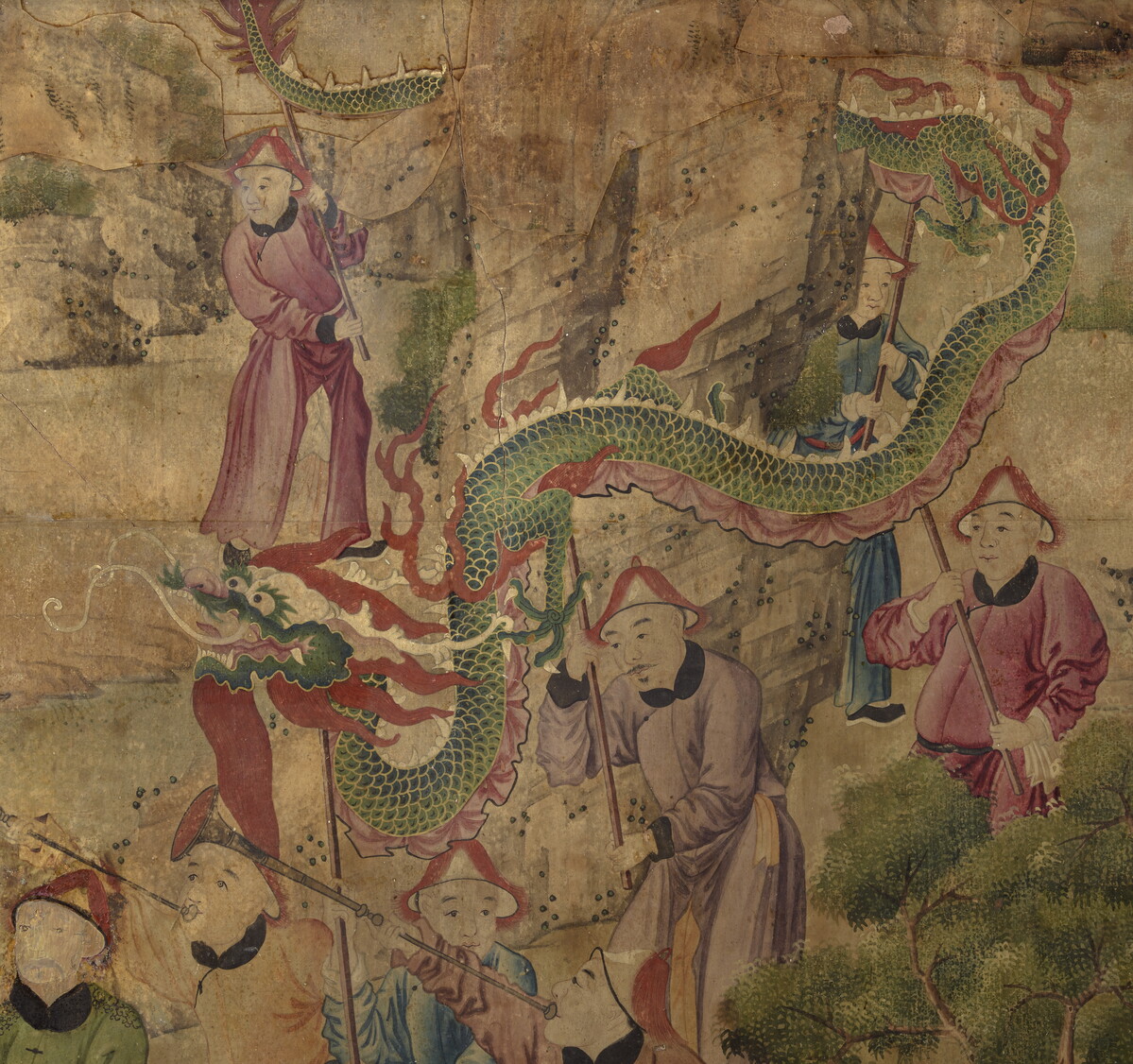
Export to England
But the history of this wallpaper goes back further. It was made around 1790 in a workshop in Canton (now Guangzhou), exclusively for export to Europe. It was transported by the East India Company but would have been bought and sold privately and carried in private staff quarters on the ship.
At this time, a return expedition from London to Canton would take about 18 months. Chinese wallpaper was a minor part of the cargo on these vessels. As it was seldom imported, its rarity added to its desirability and luxury status.
On arrival, goods were auctioned or sold directly from specialist shops in London. Decorating firms including Cowtan’s and the paperhangers Robson & Hale provided such papers around this time, and the latter firm supplied them to the Royal Pavilion. There are references to Chinese ‘figure’ paper in the accounts of the Crace firm (one of the principal decorators at the Pavilion) in 1815: ‘Paper provided by order of His Royal Highness for Robson & Hale: 64 large Chinese players and Mythological figures, 108 smaller’.
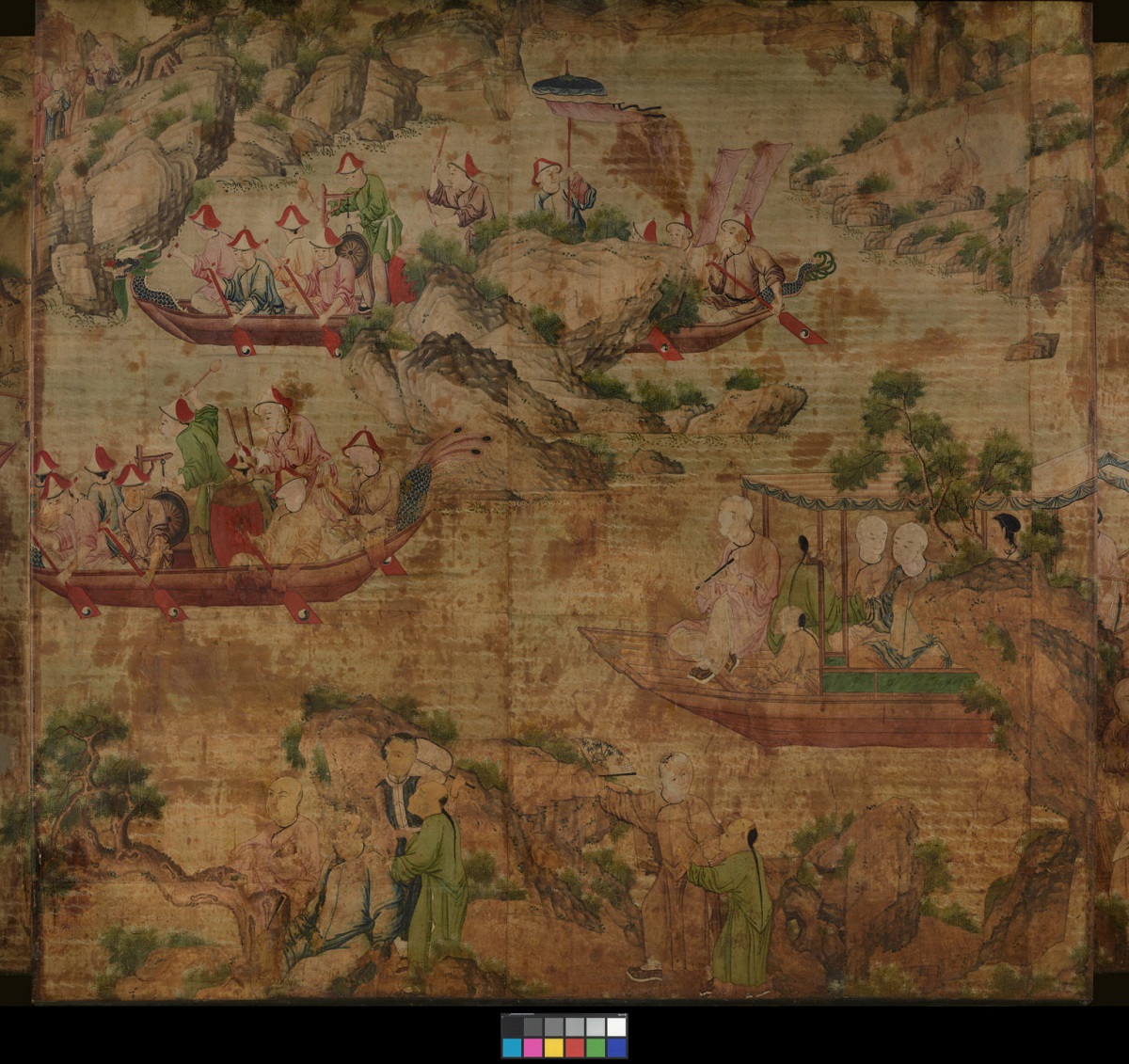
Installation in the Adelaide Corridor
The Adelaide Corridor and the rooms leading from it were part of the so-called ‘New North Building’, the last major portion of the Royal Pavilion to be built. It was completed in 1821. Senior members of the royal household had apartments there and some rooms were occupied by Lady Conyngham, mistress to the king. There is a private staircase which connected her boudoir to the King’s Bedroom below.
Records show that the Adelaide Corridor wallpaper would have continued beyond the existing passage, down a spiral staircase and into a lobby area on the ground floor. This staircase was removed in 1867. No pictorial records of it survive but there are floor plans and written references. During structural work in 1993 fragmentary remains of the paper were discovered below a later floor, where the stairs would once have been. We can only imagine how spectacular the continuation of this wallpaper would have looked.
Wallpaper, especially hand-painted paper, was expensive and highly valued. It was often attached to linen or canvas so that it could be moved, stored and replaced elsewhere. However, the Adelaide Corridor paper was pasted directly to the walls without such a lining. The corridor ceiling height is quite low and, as this export paper was made to a standard height, it was shortened in such a way that the tops and bottoms were retained. All the ‘cutting and pasting’ needed to make this wallpaper fit the space may account for its firm attachment to the wall and consequently to its survival. As almost all the interior decorations of the Pavilion were removed prior to the 1850 sale of the building by Queen Victoria, it is one of the few pieces to have remained in place since George IV’s reign.
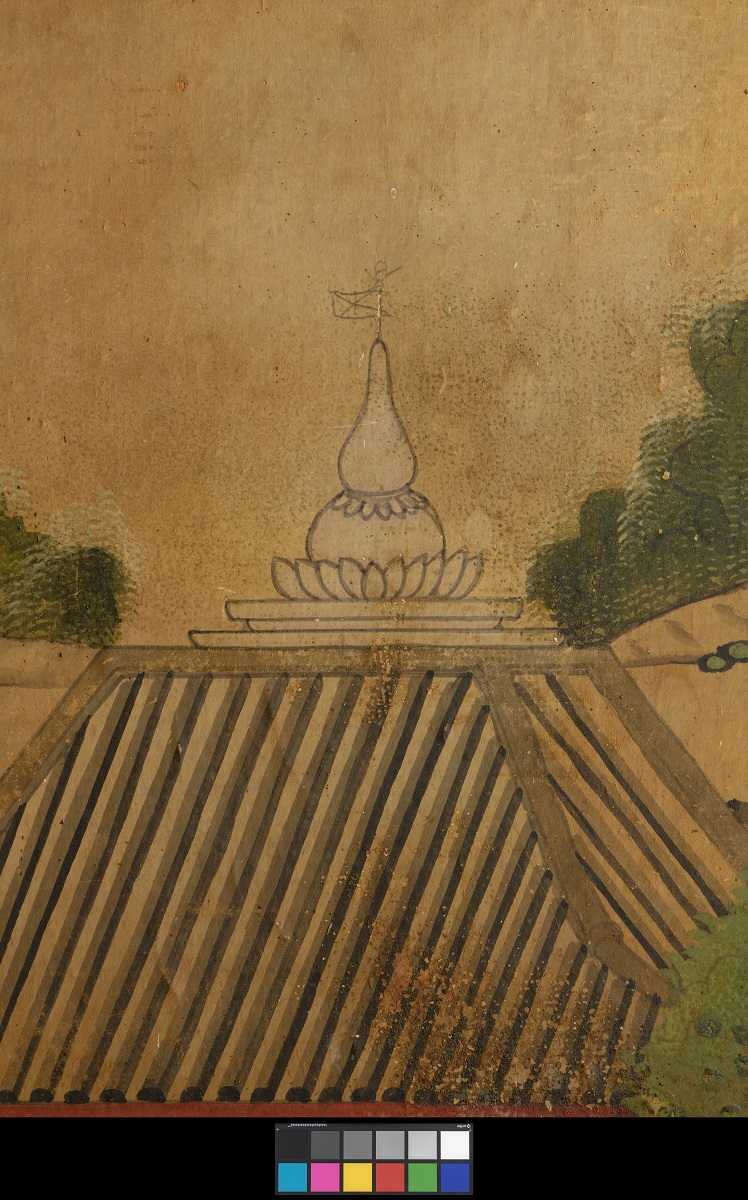
Damage & Conservation
The wallpaper was varnished at some time in the late 19th century and while this may have protected it from some types of damage, it resulted in the brown staining that can be seen today. In the 1960s the paper was cleaned but some of the varnish seems to have sunk into the paper, leaving local staining as well as brittleness.
The paper also suffered damage through rainwater leaks and the effects of oil and candle lighting. During the 20th century a bamboo trellis pattern paper was hung over some of the damaged areas, which still remain underneath and have yet to be revealed.
Between 1914 and 1916 the Pavilion served as a military hospital and this part of the building housed Indian officers. Between the 1920s and 1960s it became family accommodation for the Director of the Pavilion. It is reported that his children would ride bicycles up and down the corridor. As the corridor is less than two metres wide it isn’t surprising that the wallpaper has been scraped and bashed about quite a bit. More surprising still are some additions to the wallpaper, noticed during a recent examination. Which past guest might have been responsible for this added stick man on top of this building…?

Research
Chinese export wallpaper is often classified into three broad themes: birds and flowers, landscape, and pictorial. There are few examples of this latter type remaining in place in the UK, which makes the Adelaide Corridor paper particularly special. Even more remarkable is the discovery (through various scholars’ research) of several similar or matching examples in European and American houses, suggesting they were produced in some quantity at around the same time, like this example from The Landhuis Oud Amelisweerd in the Netherlands.
With further support from the Paul Mellon Foundation for studies in British Art we are able to continue our research into the Chinese export wallpapers kept in the archives of the Royal Pavilion & Museums Trust and will able to share these online with you.
Credits
We’re grateful for contributions to research on the Adelaide Corridor from:
- Yixin Xu, MA History of Art (Beijing and Beyond: Art and Empire in Early Modern China), The Courtauld Institute of Art.
- Dr Josepha Richard Associate Lecturer in Chinese Art, The Courtauld Institute of Art.
- Emile de Bruijn, Assistant National Curator Decorative Arts, National Trust
- Gordon Grant
Supported by the Paul Mellon Centre for Studies in British Art.

